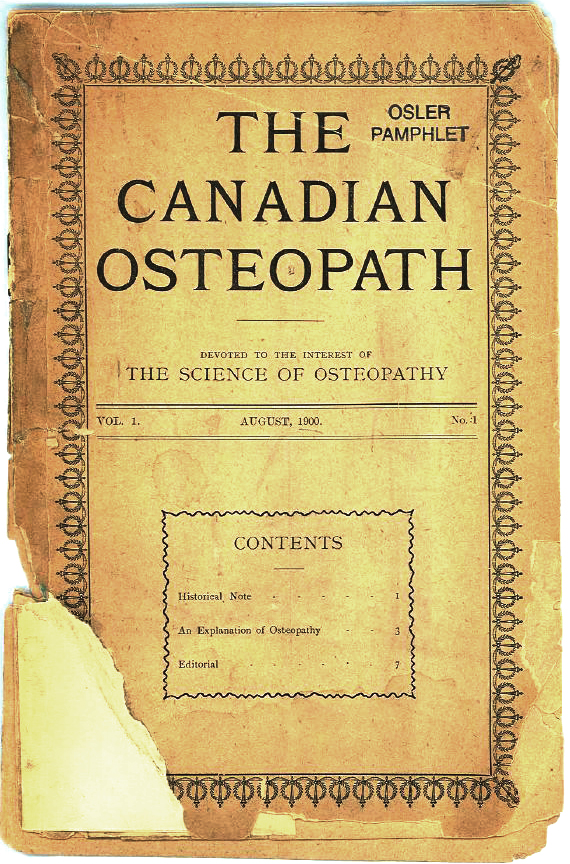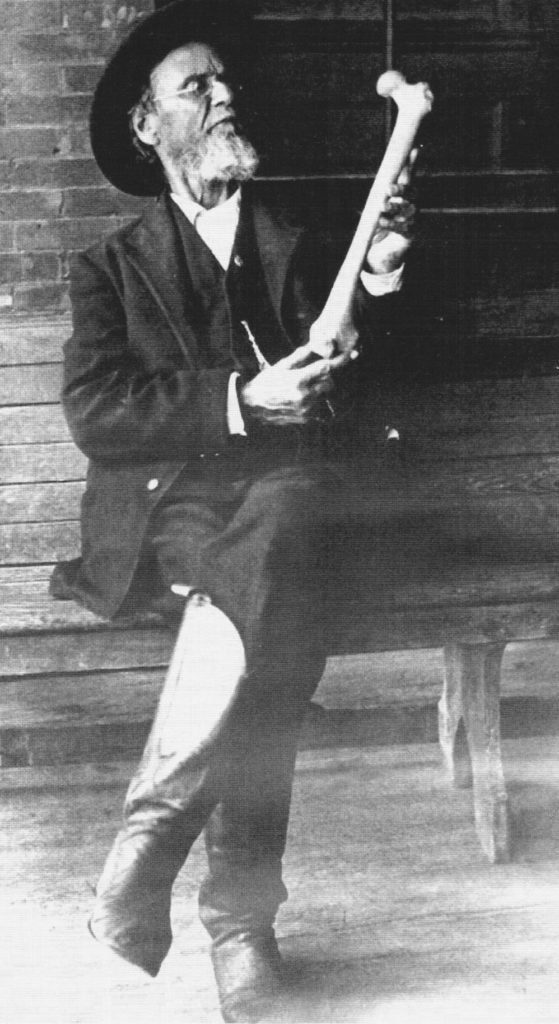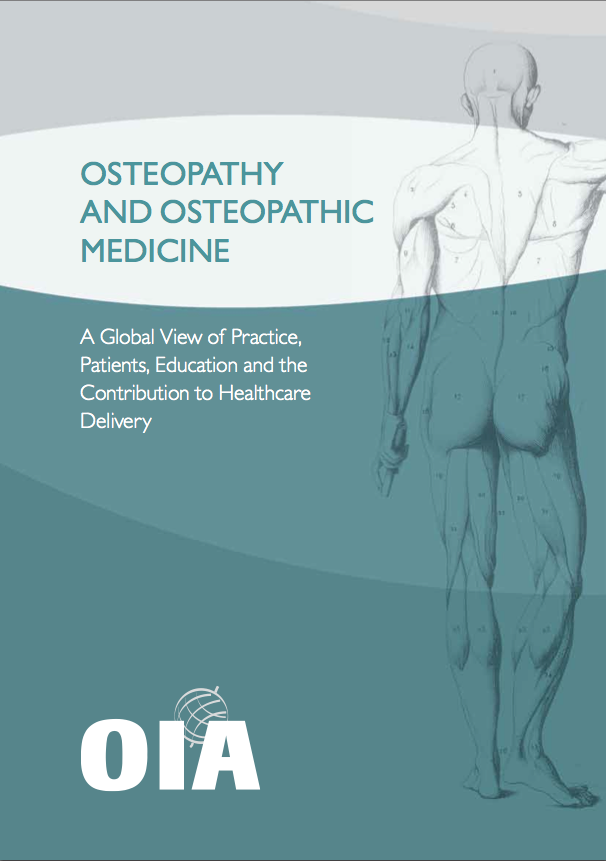History of Osteopathy
Osteopathy was discovered by the American Andrew Taylor Still, who was a country doctor. Still was the son of a Methodist preacher and was familiar not only with spiritual guidance, but also with simple traditional medicine.
He spent the first decades of his life in the wild natural surroundings of the borderland to the virgin West. Although Still’s education was extremely rudimentary, he was a very close observer of nature during this period and acquired a unique functional knowledge of anatomy.
Still played an active military and political role in the American Civil War on the side of the opponents of slavery. His fate took a decisive turn in 1864, after his return from the war. Three of his children died within a few days during an epidemic of meningitis. Shortly after, a fourth child died of pneumonia, even though he had consulted the best doctors and preachers in the area. Still was so disappointed that he abandoned “heroic medicine” and all religious institutions, in the attempt to find a better form of medicine. He started to take an interest in the spiritual movements of his time: American transcendentalism, phrenology, mesmerism, magnetism, and also bone setting, as practised by the medicine men of the Shawnee Indians.
Still also attentively studied highly complex philosophical treatises, such as those written by Herbert Spencer, the founder of evolutionary theory, and current developments in European medicine. In this period,he also acquired knowledge of mechanics and electricity. Still’s open mind towards spiritualism was particularly controversial. Seances, an Indian medium and his later membership in a freemason lodge all bear witness to his broad interest in this area too. However, few of his critics were prepared to acknowledge that, however eccentric his behaviour was, he applied what were for the period the strictest scientific standards. Everything that could be implemented in practice and which appeared to be of use to his patients was integrated into his osteopathic system and the rest was rejected – totally independent of current fashions, expert opinions, traditions or specialized literature. Still thus embodied the ideal of a neutral empiricist.
The result of Still’s long and intensive search was the discovery of a new medical philosophy – osteopathy, whose date of birth he describes to be 22 June 1874. This was centred on the perfect creation as the expression and work of an unnameable higher power. The individual structures and the functional connections both within and between them were subject to harmonious laws. Still also applied this conviction to man. He developed the concept of the triune man – the triply differentiated unity of man – with the unity of body, spirit and soul. He recognised this as creation’s perfect self-healing mechanism. The optimal function of “God’s pharmacy” therefore essentially depends on the supply and removal of nervous energy, blood and lymph, to and from the body. If these pathways are blocked, this hinders the self-healing mechanism and the corresponding organs become sick. Still regarded the spinal column as the centre of peripheral supply and this is why he looked for displaced vertebral bodies in most diseases, even internal diseases. He assumed that malposition of the vertebral bodies inhibited the function of surrounding nerves and vessels and attempted to reposition them specifically by gentle manipulations. Manipulation of a bone (Greek: osteon) assured supply and removal, the self-healing mechanism could become active again and there was a positive effect on the disease (Greek: pathos).
Still regarded treatment with drugs as proof of a lack of confidence in the powers of nature and categorically rejected this, just as he rejected premature surgery. According to Still, the osteopath was simply a mechanic with complex ideas and the perfect creation was the healer. As a consequence, the osteopath was never directly responsible for the cure, but was simply the intermediary between the patient and the freely acting creation.
In the mid-1870s in Kirksville, Missouri, Still finally obtained the recognition he deserved for his extraordinary dexterity, his enormous general scientific knowledge, his intense spiritual experience of life and his dogged ambition. Because of the enormous success of his treatments and his exceptional ability to use his immense general knowledge to recognise functional interconnections with no effort, his reputation as “wonder healer” spread rapidly. Encouraged by his patients and even some doctors, at the age of 64 Still finally founded the first osteopathy training school in the world, the American School of Osteopathy (ASO) in Kirksville in 1892. The triumphant march of osteopathy had begun.
In 1910, the American Medical Association initiated a state investigation of all medical training centres in America. This was intended to guarantee further financial support only for those candidates which fulfilled specific criteria in the evaluation. The standards of the medical universities – including pharmacy and pharmacology – were used as the basis. The so-called Flexner Report resulted in almost all osteopathy colleges distancing themselves increasingly from Still’s original concept to guarantee their economic survival. Therefore, most osteopaths in the USA now regard manual techniques as being of little importance. What was even more unfortunate was that the central concept of the triune man – with the conviction of a perfect self-healing mechanism subordinate to a spiritual power – was expelled from osteopathy. Thus osteopathy drifted more and more towards allopathic medicine.
At the turn of the century, Still returned to his favourite occupations: observing nature, internal development and social exchange of opinions. Although he was revered by this students and patients, his faculty became increasingly alienated from “the old doctor.” In particular, they had no sympathy for his stubborn refusal of any sort of medication and his resumption of research in spiritualism. Still was not distracted and continued his studies and his attempts to fathom the mysteries of osteopathy free of prejudice. In 1917, more than 50 years after the start of his career as a simple country doctor, Still died. He had discovered one of the most important medical philosophies in the history of mankind, osteopathy, centred on the triune man as part of a perfect creation.

In 1900 the American-trained osteopath Arthur S. Burgess (born in 1873) in Montreal, published the first, and only, issue of a journal, ‘The Canadian Osteopath’.
The journal starts with a page of definitions of osteopathy, followed by a four-page short history and explanation of the discipline. An editorial entitled “Greeting” comes next, which ends, “Therefore to those who know nothing of Osteopathy and to those who would know more, to those who seek the aid of Osteopathy and to those engaged in its practice, we commend this journal for kindly consideration.”
Click here to read The Canadian Osteopath
In 1926 Osteopathic physicians in Canada formed the Canadian Osteopathic Association. But since health care is a provincial responsibility and health care professions are regulated by the provinces, different restrictions were put on the practice of osteopathy in each province. Osteopathic physicians in Canada wanted to be given equal status with allopathic physicians (doctors of traditional Western medicine) but at this time, allopathic medical associations did not want osteopathic physicians to participate along with them in the same way, within the Canadian health care system.
There continues to be no osteopathic medical schools anywhere in Canada to the present day.
The Medicine Act, 1991 is proclaimed in Ontario. Only members of the College of Physicians and Surgeons of Ontario can use the title “osteopath”, an abbreviation or variation in another language.
Osteopathy and Osteopathic Medicine: A Global View of Practice, Patients, Education and the Contribution to Healthcare Delivery.
Download the Osteopathy and Osteopathic Medicine Book (PDF)
Osteopathy and Osteopathic Medicine Summary Flier (PDF)
The document was created at the request of our members during the 2010 San Francisco Annual Conference, in order to augment the World Health Organisation’s Benchmarks for Training in Osteopathy. The report is supported by OIA surveys that produced an audit of current osteopathic practice, based on a global ‘snapshot’ of patients, as well as a survey of osteopathic organisations and practitioners in more than 30 countries.
Osteopathy and Osteopathic Medicine: A Global View of Practice, Patients, Education and the Contribution to Healthcare Delivery describes the current state of the osteopathic profession globally and how it functions within national health delivery systems across a range of countries. The report builds upon the OIA’s Status Report document, published in March 2012.
The WHO was involved the preparation and layout of the document, following a formal meeting at our 2012 Paris Conference, where it was recommended that the report serve as an initiative to document the growing significance of osteopathic healthcare worldwide. The WHO also contributed a foreword to the report.
Osteopathy and Osteopathic Medicine is presented in four parts: the concept, history and spread of osteopathic healthcare; practitioners, patients and the scale of osteopathic practice; models of education and regulation; and efficacy, safety and cost-effectiveness. It brings together data from a range of international sources including a survey of international practice and a census of covering 33 countries.
- The opening chapter on concept history and spread of osteopathic healthcare charts how the two different streams of the profession – osteopaths and osteopathic physicians – have emerged both working with a shared paradigm of osteopathic healthcare.
- The chapter on practitioners and patients identifies that there are now at least 87,000 osteopathic physicians and 43,000 osteopaths working in over fifty countries. It also identifies the continuing significant growth of both streams of the profession around the world. Data from an OIA practitioner survey, and other national surveys and research, identifies patient demographics, patient pathways, presenting health complaints, and treatment modalities for both osteopaths and osteopathic physicians.
- The chapter on models of education and training sets out the increasing depth and breadth of osteopathic education and training including the osteopathic physician model with full medical practice rights and the osteopath model with a growing move towards Master’s level educational qualifications. The chapter also explores the variety of current and emerging regulatory and recognition models around the world, including scope of practice and the maintenance of registration or licensure.
- The final chapter explores the evidence that exists for the efficacy, safety and cost effectiveness of osteopathic healthcare including the available evidence on the outcomes of osteopathic techniques. The chapter concludes with the acknowledgement of the osteopathic profession that more research is needed.
History and Current Context of the Osteopathic Profession
Background
The Status Report on Osteopathy has been prepared to present the broad range of osteopathy and osteopathic medicine, including both professional “streams”: the osteopaths and osteopathic physicians worldwide. The report has been developed by the OIA Board of Directors, with input from our member organisations and in concert with the World Health Organisation. It is a resource regarding the osteopathic profession and covers the following topics:
- Osteopathy/osteopathic medicine in its historical and current context
- Osteopathic core competencies
- Existing regulatory models
- Educational standards worldwide
The statutorily regulated models of USA, Europe and Australasia are referenced. Details such as standard curricula, core competencies and practice standards are part of the Annexes below.
10 steps to utilise the OIA Global Osteopathic Reports
- OIA write to UN member nation health ministers including report
- Members write to national, state and local health minister or authority, bringing their attention to the report. Include opposition leaders and copy both
- Members write to national, regional and local newspapers bringing their attention to the report. Target health writers/ editors
- Members contact TV and radio. Target health and current affairs programs
- Members target any national or regional health initiatives that are current in their country. e.g.; National Pain Summit Australia. Send Chair and Secretary copies of the report
- Individual practices encouraged to mention Status Report in their clinic newsletter with links
- Local informative meetings for all health care professions like doctors, nurseries, midwives, physical therapists etc.
- Local patient information in adult education centers or evening classes or parent information in schools
- Presentations to graduating health professions in universities
- Use Status Report for newsworthiness for media releases during International Osteopathic Healthcare Week


Dr. Andrew T. Still
( 1828 – 1917 )
The Father of Osteopathy

